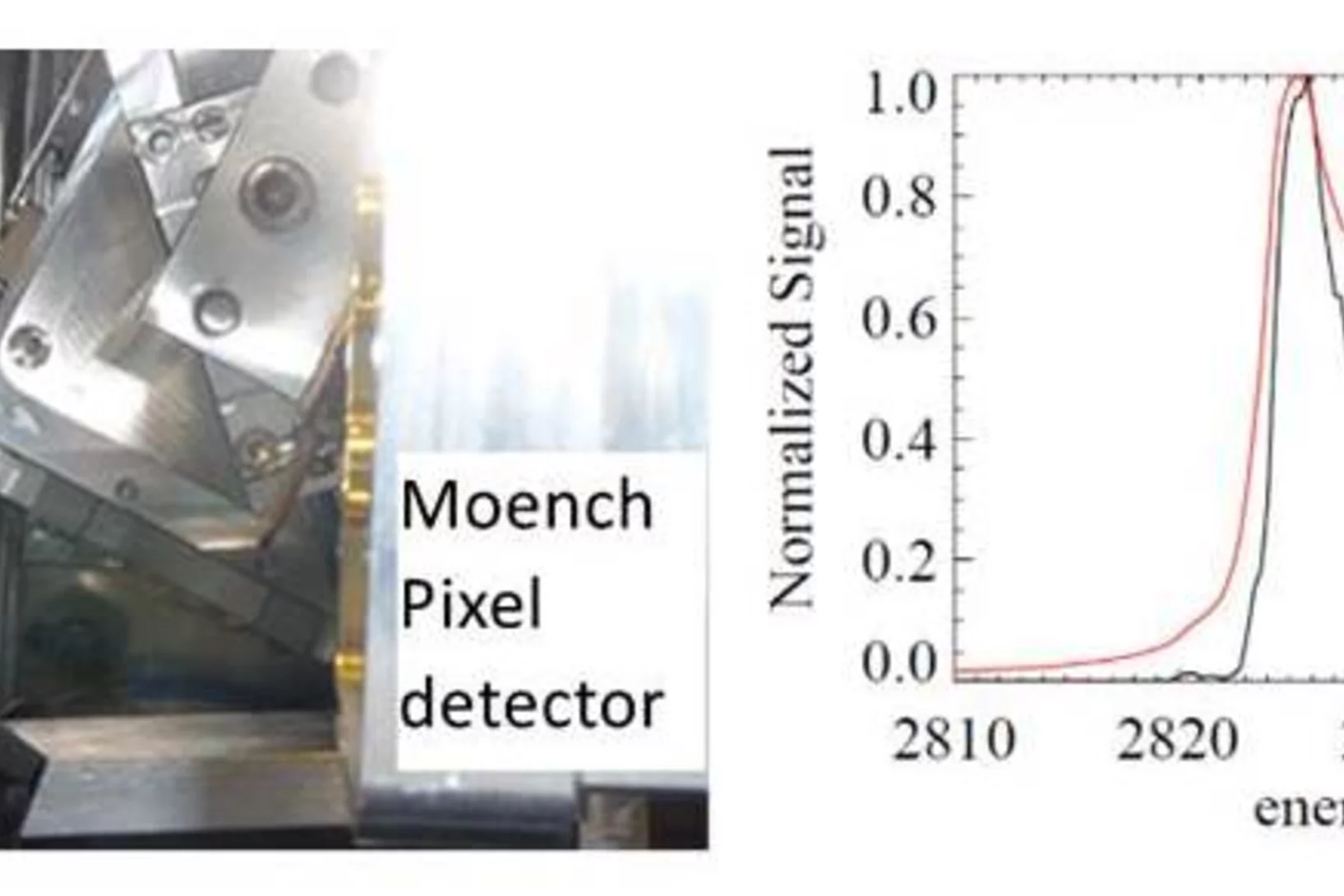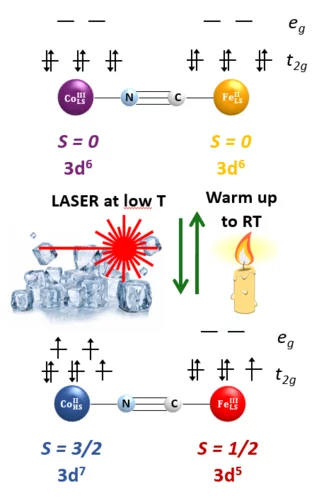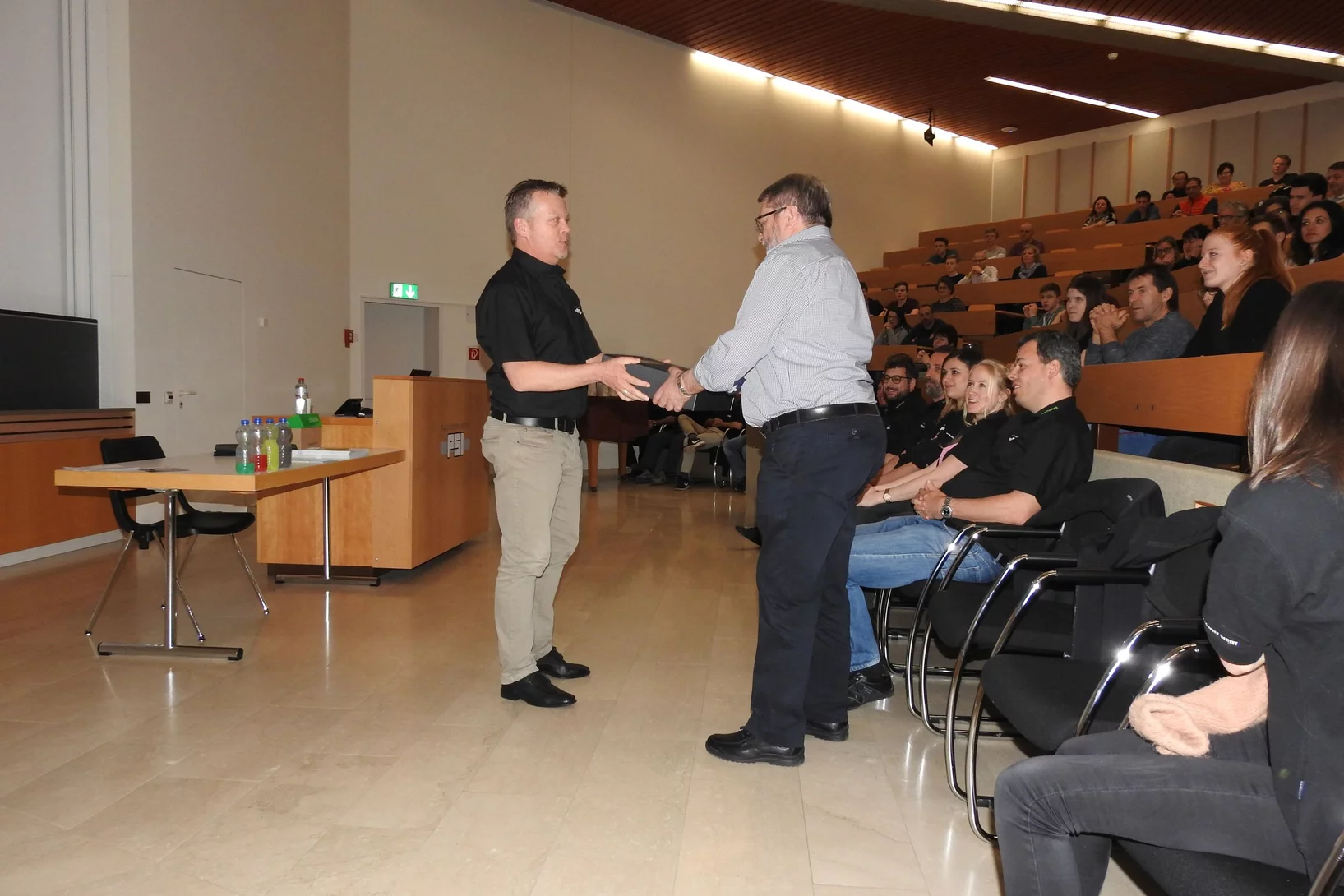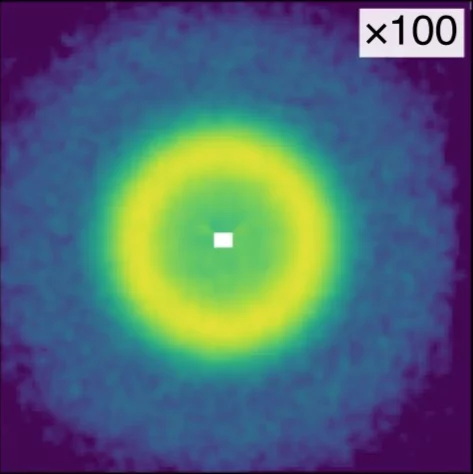At PSI, several projects are dedicated to important research questions concerning the Sars-CoV-2 coronavirus and the resulting diseases. We provide information on activities and projects, for example on investigations of lung tissue, on the production of proteins and antibodies or on ideas for new research on Covid-19.
Useful links
A compass pointing West
Researchers at PSI have discovered a new phenomenon of magnetism with the help of the Swiss Light Source SLS. Certain groups of atoms behave like a compass pointing West. This could make computers much more powerful.
Chirally coupled nanomagnets
Magnetically coupled nanomagnets have multiple applications in nonvolatile memories, logic gates, and sensors. The most effective couplings have been found to occur between the magnetic layers in a vertical stack. We achieved strong coupling of laterally adjacent nanomagnets using the interfacial Dzyaloshinskii-Moriya interaction. This coupling is mediated by chiral domain walls between out-of-plane and in-plane magnetic regions and dominates the behavior of nanomagnets below a critical size.
Ambizione grant for Max Zoller
Max Zoller, currently at the Physik-Institut of the University of Zurich (UZH), has been awarded a Swiss National Science Foundation Ambizione grant with PSI as host institution. Together with a PhD student he will join the particle theory group (NUM, Laboratory of Particle Physics (LTP)). The research of Max Zoller focuses on the automation of perturbative higher-order calculations. With the Ambizione grant Max will now move to PSI for four years, starting on June 1, 2019.
New mid-IR pump source for SwissFEL with CEP capabilities installed
LNO has just installed a new CEP-capable mid-IR source for SiwssFEL experiments. The new source will enable a new class of experiments focused on understanding the unique properties of nonequilibrium driven states.
A new twist on a mesmerising story
The Einstein–de Haas effect, first demonstrated more than a century ago, provides an intriguing link between magnetism and rotation in ferromagnetic materials. An international team led by ETH physicist Steven Johnson now established that the effect has also a central role in ultrafast processes that happen at the sub-picosecond timescale — and thus deliver fresh insight into materials that might form the basis for novel devices.
Inside Batteries
Lithium ion batteries (LIB) are essential in modern everyday life, with increasing interest in enhancing their performance and lifetime. Secondary particles of Li-rich cathode material were examined with correlated ptychographic X-ray tomography and diffraction microscopy at different stages of cycling to probe the aging mechanism.
LENS launches activities to strengthen European neutron science
The members of the League of advanced European Neutron Sources (LENS) held their first General Assembly and the first Executive Board meeting on 26 March 2019 in Liblice, the Czech Republic. The consortium adopted and signed Statutes detailing the purpose of LENS, guiding the work of the statutory bodies, and laying the framework for Working Groups responsible for the execution of foreseen activities. For the Swiss spallation neutron source SINQ the head of the NUM division Christian Rüegg signed the documents.
Investigation of anionic redox activities in organic-based electrode for Li-ion batteries
To date the electrochemical activity of battery materials was always relying in the oxidation/reduction of cationic redox (change of oxidation state of transition metals generally). However, recently, it was established in new cathode materials (so call Li-rich cathode) that the oxygen from the crystal lattice might also play the role of anionic redox center leading to enhance then the specific charge of battery materials.
Selective Alkane Functionalization to Olefins
Light alkanes are abundantly available and cheap resources that are often burned at oil wells because of the missing infrastructure for valorization. Novel technologies are needed for their selective functionalization to use natural gas as an energy vector in the transition between the oil and the renewables era. Catalytic oxyhalogenation may unlock the transformation of cheap and abundant alkanes into commodities. When chlorine-based reactions are compared with bromine, improved selectivities above an iron catalyst arise from surface-confinement of the reaction mechanism in the case of chlorine as halogen.
Von Hamos spectrometer for tender energies open to users
A new compact von Hamos spectrometer for tender x-rays (current energy range 2.25-4.5 keV), is now available for emission spectroscopy. This spectrometer allows analyzing the energetic composition of fluorescent light from the sample. It provides research opportunities for emission spectroscopy, and RIXS on the K (P-Sc), L (Zr-Cs) and M (Ir-Fr) absorption edges.
Photoswitching in a Molecular Cube
Niéli’s paper is accepted in the Journal of Physical Chemistry Letters! We use X-ray absorption spectroscopy and X-ray magnetic circular dichroism to watch directly how the Co and Fe ions in a molecular cube change their oxidation states and turn from diamagnetic into paramagnetic units upon light irradiation.
Elternabend 2019
Über 160 Lernende, Eltern, Berufsbildnerinnen, Berufsbildner und Betreuer besuchten den diesjährigen Elternabend am 20. März. Vorträge, Arbeitsplatzbesichtigungen, Gespräche und ein feines Essen bildeten das Programm.
DGKK Award for young researchers 2019 for Pascal Puphal
Dr Pascal Puphal (currently a Postdoc at PSI, LMX, Solid State Chemistry Group) has recently been awarded with the DGKK young researcher price from the German Crystal Growth Community on his Ph.D. work performed in the group of Cornelius Krellner at the Geothe University Frankfurt am Main on the topic "Tuning two dimensional Cu-based quantum spin systems". The work covers the stabilization and proof of a 2D dimer structure by Sr substitution in Han Purple and the research of novel kagome materials of the prominent quantum spin liquid candidate herbertsmithite by the hydrothermal route.
A new spin in nano-electronics
In recent years, electronic data processing has been evolving in one direction only: The industry has downsized its components to the nanometer range. But this process is now reaching its physical limits. Researchers at the Helmholtz-Zentrum Dresden-Rossendorf (HZDR) and the Paul Scherrer Institut (PSI) are therefore exploring spin waves or so-called magnons – a promising alternative for transporting information in more compact microchips. Cooperating with international partners, they have successfully generated and controlled extremely short-wavelength spin waves. The physicists achieved this feat by harnessing a natural magnetic phenomenon, as they explain in the journal Nature Nanotechnology.
Additive Manufacturing of High Entropy Alloys
Additive manufacturing of high-entropy alloys combines the mechanical properties of this novel family of alloys with the geometrical freedom and complexity required by modern designs. An approach to additive manufacturing of high-entropy alloys has been developed based on 3D extrusion of inks containing a blend of oxide nanopowders (Co3O4 + Cr2O3 + Fe2O3 + NiO), followed by co-reduction to metals, inter-diffusion and sintering to near-full density CoCrFeNi in H2. A complex phase evolution path is observed by in-situ X-ray diffraction in extruded filaments: the oxide phases undergo reduction and the resulting metals inter-diffuse, ultimately forming the desired fcc-CoCrFeNi alloy (see figure). Linked to this phase evolution is a complex micro-structural one, from loosely packed oxide particles to fully-annealed, metallic CoCrFeNi with 99.6 ± 0.1% relative density. CoCrFeNi micro-lattices are created with strut diameters as low as 100 μm and excellent mechanical properties at ambient and cryogenic temperatures.
Cladding tubes and their properties
In the Nuclear Energy and Safety Research Division at PSI, Johannes Bertsch focuses on the so-called cladding tubes that are used in nuclear power plants.
Insights into a well-known disease in ageing populations: Abdominal and popliteal aneurysm
Abdominal aortic aneurysm, an enlargement of the abdominal aorta, may lead to rupture and thus acute health issues and death. Scanning X-ray imaging enabled new insights in the nano-structure of calcifications associated with abdonimal and popliteal aneurysm and allowed mapping the distribution of nano- and micro-calcifications as well as of collagen, elastin and myofilament as building blocks of connective tissue across samples from human donors.
Meeting on Mu3e detector construction in Wengen
We spent four days in Wengen, Switzerland going over the details of the Mu3e detector and discussing the procedures for producing and integrating the sub-detectors. Safety, powering, cooling, electronics and readout were also among the topics.
Teamevent Informatiker EFZ
Was erwartet uns im Adventureroom in Baden? Wir sind gespannt und stürzen uns auf ein unbekanntes Abenteuer.
Teamevent Elektroniker EFZ
Ein Battle im Battlepark in Schwerzenbach und ein feines Essen im Restaurant Picone bildete der Rahmen des Teamevents der Lernenden Elektroniker EFZ.
Welcome to Thomas Singer
We warmly welcome Thomas Singer as a PhD student in the Laboratory of Environmental Chemistry. He joined the Analytical Chemistry group on 1 March 2019.
Thomas Singer studied Environmental Sciences at ETH Zurich, with a focus on biogeochemistry processes and pollutant dynamics. For his master thesis he investigated controlling factors for leaf gas exchange.
At PSI, Thomas Singer will determine the composition and sources of the bulk organic matter in the pristine, pre-industrial atmospheres, and quantify the influence of the human activity thereon, by analysing well-dated glacier ice cores utilizing innovative techniques such radiocarbon analysis with accelerator mass spectrometry.
Dr. Margie Olbinado joins as Industrial Liaison Scientist
Dr. Margie Olbinado joins the X-ray Tomography group as scientist to take care of industrial tomographic imaging and business strategies for the growing TOMCAT industrial portfolio. Before joining PSI, Margie was a scientist at The European Synchrotron - ESRF in France. As industrial liaison, she will work in collaboration with the PSI Technology Transfer, ANAXAM and SLS TT AG.
Towards X-ray Transient Grating Spectroscopy at SwissFEL
The high brilliance of new X-ray sources such as X-ray Free Electron Laser opens the way to non-linear spectroscopies. These techniques can probe ultrafast matter dynamics that would otherwise be inaccessible. One of these techniques, Transient Grating, involves the creation of a transient excitation grating by crossing X-ray beams on the sample. Scientists at PSI have realized a demonstration of such crossing by using an innovative approach well suited for the hard X-ray regime.
Children are her passion
At PSI, Beate Timmermann built up a programme providing proton therapy for children with cancer at the same time she was raising her own son. Today she is head of the Clinic for Particle Therapy at the West German Proton Therapy Centre in Essen (WPE) and is considered one of the most accomplished experts in this field.
Supramolecular architectures of molecularly thin yet robust free-standing layers
In a collaboration within the network of the Swiss Nanoscience Institute, the formation of free-standing molecular monolayers using self-assembly processes has been demonstrated. The results of the study have been published in the February 2019 issue of Science Advances.
Ion-Induced Formation of Nanocrystalline Cellulose Colloidal Glasses Containing Nematic Domains
Controlling the assembly of colloids in dispersion is a fundamental approach toward the production of functional materials. Nanocrystalline cellulose (NCC) is a charged nanoparticle whose colloidal interactions can be modulated from repulsive to attractive by increasing ionic strength.
Accelerating small-angle scattering experiments on anisotropic samples using kernel density estimation
We propose a method to accelerate small-angle scattering experiments by exploiting spatial correlation in two-dimensional data. We applied kernel density estimation to the average of a hundred short scans and evaluated noise reduction effects of kernel density estimation (smoothing).
Das PSI hat am Diversity-Index Switzerland 2018 den 2. Rang erreicht!
Ziel des Diversity Index ist es, die Heterogenität der Belegschaften in Schweizer Institutionen und Unternehmen zu messen und aufzuzeigen, in welchen Bereichen Handlungsbedarf besteht. An der Erhebung 2018 haben 30 Unternehmen teilgenommen.
A quantum magnet with a topological twist
Theories predict that some electrons in the kagome materials have exotic, so-called topological behaviors and others behave somewhat like graphene, another material prized for its potential for new types of electronics.
Bulk single-crystal growth of the theoretically predicted magnetic Weyl semimetals RAlGe (R = Pr, Ce)
We explore two methods for single-crystal growth of the theoretically proposed magnetic Weyl semimetals RAlGe (R = Pr, Ce), which prove that a floating-zone technique, being both crucible- and flux-free, is crucial to obtain perfectly stoichiometric RAlGe crystals. In contrast, the crystals grown by a flux-growth technique tend to be Al-rich. We further present both structural and elemental analyses, along with bulk magnetization and electrical resistivity data on the crystals prepared by the floating-zone technique. Both systems with the intended 1:1:1 stoichiometry crystallize in the anticipated polar I41md (No. 109) space group, although neither displays the theoretically expected ferromagnetic ground state.




























